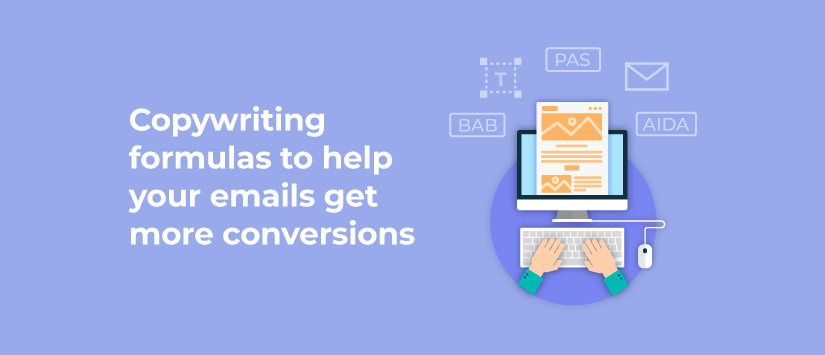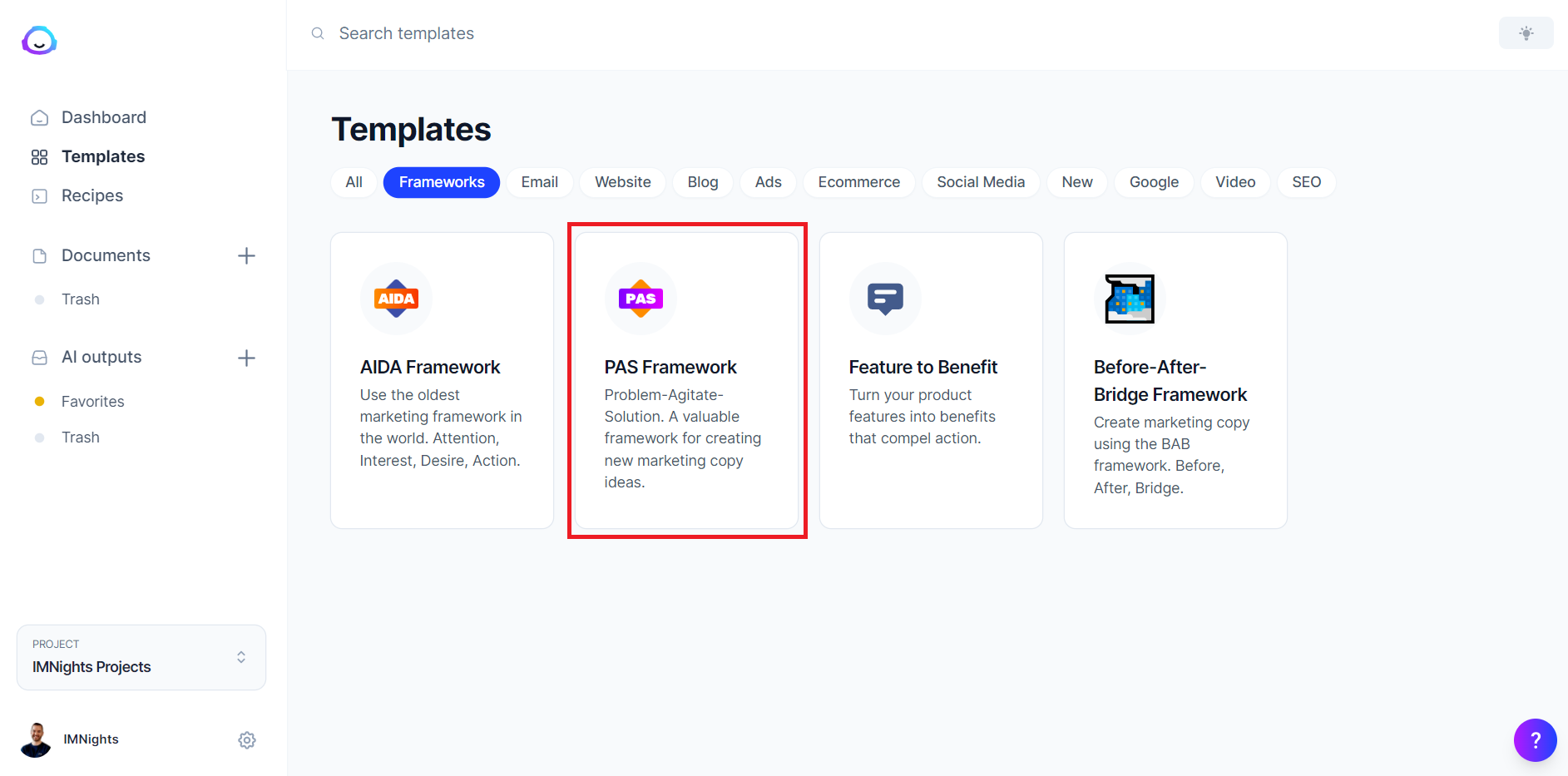Email copywriting can be a powerful tool. It drives engagement and conversions.
To craft effective emails, you need proven formulas. This is where PAS, AIDA, and BAB come in. These formulas guide you in structuring your content. PAS stands for Problem-Agitate-Solution. It highlights pain points and offers a fix. AIDA means Attention-Interest-Desire-Action.
It captures the reader’s interest and leads them to act. BAB is Before-After-Bridge. It shows the transformation your product offers. Understanding and using these formulas can make your emails more persuasive. We’ll explore each formula in detail. You’ll see how they work in real email examples. Get ready to enhance your copywriting skills. Let’s dive in!
Introduction To Email Copywriting
Email copywriting is essential for effective communication in the digital age. Writing persuasive emails can boost engagement and drive action. Understanding basic formulas helps streamline the process.
Importance Of Effective Emails
Effective emails can make or break your marketing efforts. Poorly written emails end up in the trash. On the other hand, well-crafted emails grab attention. They build trust and encourage recipients to take action. Engaging emails increase open rates and click-through rates. They can also improve your overall brand image.
Common Email Copywriting Formulas
Several email copywriting formulas are popular among marketers. Three of the most effective are PAS, AIDA, and BAB. Each formula serves a unique purpose. They help structure your content for maximum impact.
The PAS formula stands for Problem, Agitate, Solve. Identify a problem your audience faces. Agitate the problem to create urgency. Then offer a solution.
The AIDA formula stands for Attention, Interest, Desire, Action. Grab attention with a strong subject line. Spark interest with engaging content. Create desire by highlighting benefits. Finally, prompt action with a clear call-to-action.
The BAB formula stands for Before, After, Bridge. Describe the current situation (Before). Show the improved situation (After). Explain how to get there (Bridge).
Using these formulas can improve your email copywriting skills. They provide a clear structure. They also ensure your message is persuasive and engaging.

Credit: www.theblankpad.com
Pas Formula In Action
Email copywriting can be a powerful tool to connect with your audience. One of the most effective formulas for crafting compelling emails is the PAS formula, which stands for Problem, Agitation, and Solution. This formula helps you identify your reader’s problem, agitate it to highlight its urgency, and then present your product or service as the solution. Let’s break down how you can put the PAS formula into action.
Problem Identification
Start by clearly defining the problem your audience is facing. This should be something that resonates with their daily struggles or aspirations. For instance, if you’re selling a time management app, you might identify the problem as “struggling to balance work and personal life.”
Think about your own experiences. Have you ever felt overwhelmed with tasks, unable to find time for yourself? This is the kind of problem you want to highlight. Make sure it’s specific and relatable.
Agitation Techniques
Once you’ve identified the problem, it’s time to agitate it. This means making the problem feel more pressing and urgent. You can do this by describing the negative consequences of not solving the problem.
Imagine you continue to struggle with time management. Your work piles up, stress levels rise, and personal relationships suffer. Paint a vivid picture of these outcomes to stir emotions and make your readers feel the pain of the problem.
Solution Presentation
Now that you’ve identified and agitated the problem, it’s time to offer your solution. Your product or service should be presented as the ultimate fix. Explain how it can alleviate the pain points you’ve highlighted.
For example, introduce your time management app by showing its features. “Our app offers simple scheduling tools, reminders, and analytics to help you reclaim your time and reduce stress.” Ensure your solution feels easy and accessible.
Remember, the PAS formula is all about connecting with your audience on an emotional level. By following these steps, you can craft emails that not only capture attention but also drive action. What problem will you solve for your readers today?
Aida Formula In Practice
Effective email copywriting uses the AIDA formula to grab attention, create interest, develop desire, and prompt action. Applying AIDA ensures emails are engaging and persuasive.
The AIDA formula is a powerful tool in email copywriting. It stands for Attention, Interest, Desire, and Action. Using this formula helps you craft emails that grab your reader’s attention and guide them to take action.
Implementing the AIDA formula requires understanding each step deeply. Let’s break down how you can use it effectively in your email campaigns.
Attention-grabbing Strategies
The first step is to capture your reader’s attention. Your subject line and opening sentence are crucial.
Use bold statements or questions. For example, “Did you know you can double your sales in just one month?”
Personalize your emails. Mentioning your reader’s name can make them feel valued.
Generating Interest
Once you have their attention, keep them interested. Share something valuable or intriguing.
You can highlight a problem they face. For instance, “Struggling to find time for email marketing?”
Then, offer a solution. “Our tool automates your email campaigns, saving you hours each week.”
Desire Creation
Next, you need to build desire. Make your reader want what you’re offering.
Showcase benefits, not just features. “Imagine increasing your open rates by 50%.”
Use testimonials or case studies. “Jane from XYZ company saw a 40% increase in sales after using our service.”
Prompting Action
Finally, guide them to take action. Be clear and direct.
Use strong call-to-actions (CTAs). “Sign up now” or “Get started today.”
Create urgency. “Limited time offer” or “Only a few spots left.”
Have you tried using the AIDA formula in your emails? What strategies have worked best for you?

Credit: www.acrelianews.com
Bab Formula For Emails
The BAB formula stands for Before, After, and Bridge. This email copywriting formula helps create a clear path from a problem to a solution. It paints a picture of a difficult situation, shows the improvement, and provides a link between the two. Let’s dive into how this works in email copywriting.
Before Scenario
Describe the problem your audience faces. Be specific. Show empathy. This step makes the reader feel understood. For example, “Struggling to find time for exercise?” or “Feeling overwhelmed by your to-do list?”
After Scenario
Paint a picture of the ideal outcome. Make it relatable. Show the benefits. For instance, “Imagine having a clear plan for your day” or “Think about feeling energized and fit”. This helps the reader see the value.
Bridging The Gap
Introduce your product or service as the solution. Explain how it helps. Connect the dots. For example, “Our app creates personalized workout plans” or “Our tool organizes your tasks efficiently”. Make it clear and simple.

Credit: imnights.com
Conclusion
Understanding email copywriting formulas can boost your marketing success. The PAS, AIDA, and BAB formulas provide clear structures. These methods help you engage readers and drive action. Practice these techniques to refine your skills. Your email campaigns will improve with consistent effort.
Keep experimenting and learning. This way, you will find what resonates best with your audience. Good luck with your email copywriting journey!
